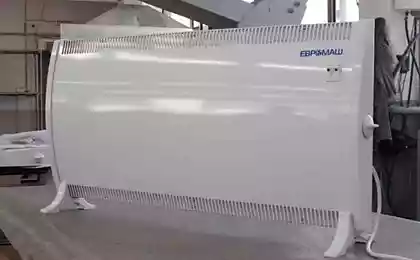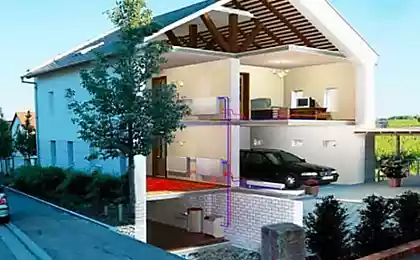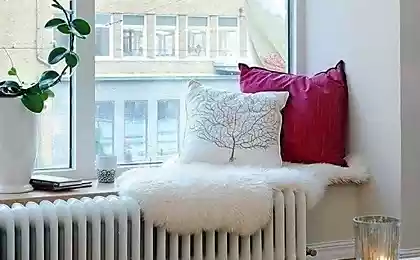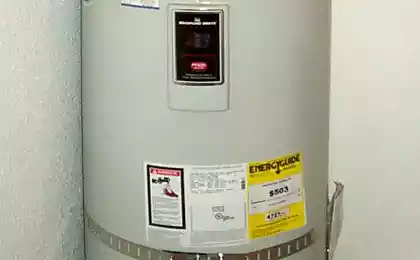542
Features recessed beneath the sill convector
In an effort to make heating more efficient, experts in the field of heat created convectors, embedded in the sill. Such an unusual heaters are designed to provide reliable protection against the penetration of cold in the heated room. And it should be noted that they do it pretty well. Let's see what are these embedded heaters, how they work and how they work.
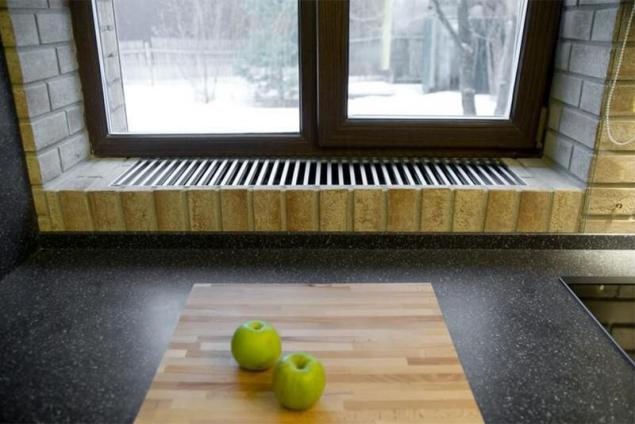
Device heaters for window sillsAll convection heaters work through natural convection. Installed heating elements provide heating of the air, the result of which he rises, displacing part of the air mass down. Formed a kind of cycle, which is heating and mixing of air masses in the room. After some time, after switching on the heating in the room becomes noticeably warmer.
Convectors embedded in the sill are rather simple heating devices similar in construction with under-floor models. Often they are called parapet. Their main feature is the small size – they are built under window sills, so should not take too much space.
Are these embedded heaters of the following parts:

Thermostats and transformers for power tangential fan is most often supplied separately, but can enter in the basic package embedded convective devices.Please note that there are two categories of convectors, embedded in the window sills – complete with sills and without them. The first is a structural finished devices, which can only install under the window and connected to the heating system. In their upper part one can see a narrow grating, through which emitted warm air.
Convectors without sills is focused on tapping into the already existing window – in this case you will have to thoroughly suffer their embedding. In some cases it is easier to buy a device with a ready-made window sills are made under the order. In order to match the appearance of the premises, a choice of consumers are the models different colors. Air intake and its removal are made through the decorative grate.
The purpose of the heaterswhen Installing a heater under the window, we have at their disposal an auxiliary heating device. Here its major features:
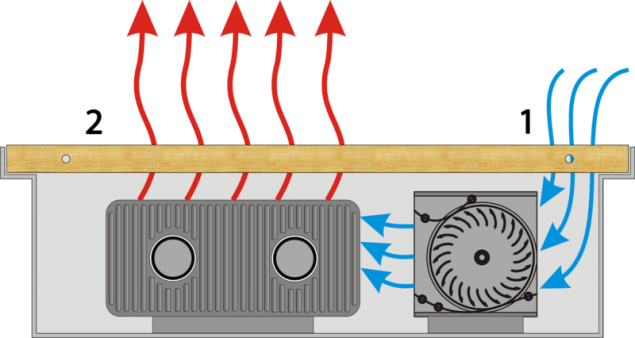
Radiators, recessed into the sill, creating a flow of warm air to prevent condensation on Windows and soffits.
The heater in the windowsill is a device with high efficiency. Most often there is activated the forced convection provided by tangential fans. Such fans are built on the basis of low-noise motors, so they won't cause discomfort at night. But they provide effective control of condensation and fighting coming from the cold glazing.
The advantages and disadvantages ofHeaters embedded in the window sill, have a number of specific advantages and disadvantages. Let's consider the most important ones, starting with the positive features.
Advantages:

Despite its modest dimensions, parapet convectors perfectly fulfill their task.
The video "Features embedded beneath the sill convector" published
Source: remont-system.ru/radiatory/osobennosti-vstraivaemyh-pod-podokonnik-konvektorov

Device heaters for window sillsAll convection heaters work through natural convection. Installed heating elements provide heating of the air, the result of which he rises, displacing part of the air mass down. Formed a kind of cycle, which is heating and mixing of air masses in the room. After some time, after switching on the heating in the room becomes noticeably warmer.
Convectors embedded in the sill are rather simple heating devices similar in construction with under-floor models. Often they are called parapet. Their main feature is the small size – they are built under window sills, so should not take too much space.
Are these embedded heaters of the following parts:

- Metal case – they are completely hidden under the sills, they are not visible.
- Heating elements are made of steel and non-ferrous metals, provide air heating;
- Tangential fans provide an intensive run of air;
- System thermoregulation – maintains the preset temperature.
Thermostats and transformers for power tangential fan is most often supplied separately, but can enter in the basic package embedded convective devices.Please note that there are two categories of convectors, embedded in the window sills – complete with sills and without them. The first is a structural finished devices, which can only install under the window and connected to the heating system. In their upper part one can see a narrow grating, through which emitted warm air.
Convectors without sills is focused on tapping into the already existing window – in this case you will have to thoroughly suffer their embedding. In some cases it is easier to buy a device with a ready-made window sills are made under the order. In order to match the appearance of the premises, a choice of consumers are the models different colors. Air intake and its removal are made through the decorative grate.
The purpose of the heaterswhen Installing a heater under the window, we have at their disposal an auxiliary heating device. Here its major features:

Radiators, recessed into the sill, creating a flow of warm air to prevent condensation on Windows and soffits.
- Prevents the penetration of cold from the glass;
- Protects Windows from fogging by heating the surface of the glass;
- Provides protection of slopes from condensation.
The heater in the windowsill is a device with high efficiency. Most often there is activated the forced convection provided by tangential fans. Such fans are built on the basis of low-noise motors, so they won't cause discomfort at night. But they provide effective control of condensation and fighting coming from the cold glazing.
The advantages and disadvantages ofHeaters embedded in the window sill, have a number of specific advantages and disadvantages. Let's consider the most important ones, starting with the positive features.
Advantages:

Despite its modest dimensions, parapet convectors perfectly fulfill their task.
- Compact design – built-in sill heaters do not occupy much space and are almost invisible. Their issue is that the grille for the intake and removal of air;
- Safety for surrounding – these devices are not heated to high temperatures, so they are not burned out;
- High efficiency – built-in window heaters do an excellent job with their responsibilities, providing protection against moisture and cold;
- Do not spoil the interior – on sale models available for any customer queries.
- Quick warm-up – is ensured not only due to the powerful heat exchangers, but due to the forced convection.
- High cost – built-under sills heaters have high costs, making them unaffordable for many consumers;
- With embedding, problems may arise – especially if the equipment you need to have a ready-made sills. It is best to provide for the installation of heaters at the stage of building houses.
The video "Features embedded beneath the sill convector" published
Source: remont-system.ru/radiatory/osobennosti-vstraivaemyh-pod-podokonnik-konvektorov

